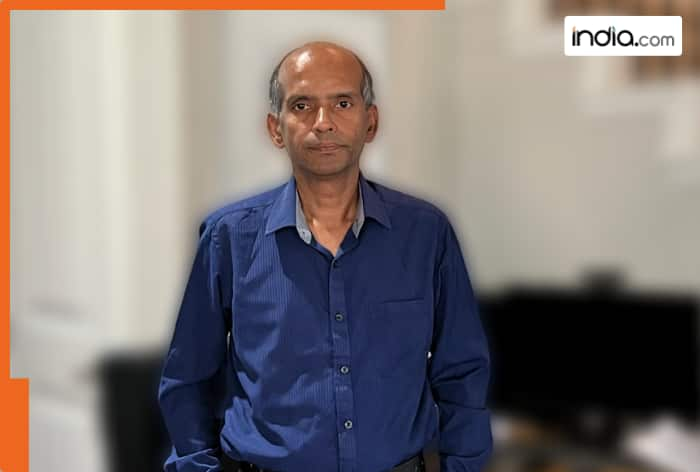A principal figure in this transformation, Ramkrishna Manchana, has been a key leader in advancing the use of micro-services and event-driven architectures, contributing significantly to sectors like retail, manufacturing, healthcare, and investment banking.

Modernizing legacy systems has become crucial for maintaining competitiveness, improving efficiency, and enhancing customer experiences. A principal figure in this transformation, Ramkrishna Manchana, has been a key leader in advancing the use of micro-services and event-driven architectures, contributing significantly to sectors like retail, manufacturing, healthcare, and investment banking.
The transition from a monolithic to a micro-services-based framework allowed for greater system scalability, enabling the system to adapt to market demands smoothly. In this field was the updating of a large-scale retail management system, this was a key initiative led by him. By decomposing the system into independent services, real-time data processing was improved, leading to more personalized and responsive customer interactions. The result was not only a significant enhancement in customer experience but also an increase in the system’s ability to scale and respond to fluctuating user demands.
In collaboration with a leading manufacturer, another project led the transformation of their supply chain management system. The improved system offered greater transparency and responsiveness, enabling the company to make more informed decisions based on real-time data analytics. This transformation helped the organization streamline its operations, reduce costs, and improve overall supply chain productivity.
The incremental migration of a manufacturing platform to a micro-services architecture was another highlight of his achievements. This move allowed the platform to handle real-time data analytics more effectively, which was essential for optimizing risk management strategies. By adopting a phased migration strategy, operational disruption was minimized, and the platform achieved greater scalability and agility, allowing the business to adapt to evolving market conditions without compromising on operational continuity.
In industries like healthcare and renewable energy, implementing microservices has brought significant improvements in system agility and responsiveness. The ability to quickly adapt to changing business needs and market conditions has proven invaluable, particularly in sectors where continuous service delivery and operational agility are paramount. “Reportedly, a 35% increase in system scalability and a 20% reduction in operational costs, thanks to optimized resource management and a reduction in service interdependencies,” he mentioned.
Moreover, legacy system migration presents unique challenges, especially when large-scale systems must transition to micro-services without disrupting ongoing operations. However, through a well-executed phased migration strategy, disruptions were minimized, and data integrity was maintained throughout the process. This strategic approach ensured minimal downtime and allowed businesses to continue operating without significant interruptions, a key factor in industries such as logistics and investment banking, where even brief downtimes can lead to substantial losses.
Data consistency during the shift from monolithic to micro-services architectures was another challenge. To address this, robust data synchronization strategies were implemented, ensuring that data integrity remained intact across distributed systems. Manchanashared “The adoption of event-driven data management practices proved essential in achieving this goal, allowing organizations to maintain reliable and accurate operations during and after the transition.”
By employing a service-by-service migration strategy, combined with containerization and orchestration tools, operational disruptions were kept to a minimum. This approach reduced downtime by 25%, ensuring that service delivery remained uninterrupted, a vital factor for businesses dependent on continuous operation.
The work extends beyond individual projects, with significant benefits such as a 35% improvement in system scalability, a 20% reduction in operational costs, and a 40% increase in system responsiveness across multiple industries. These achievements have established a framework for how businesses can successfully modernize their legacy systems to stay competitive in an increasingly digital world.
In addition to practical implementations, his contributions to the field through research have further solidified a leading role in advancing modernization techniques. Published works, such as “Balancing Agility and Operational Overhead: Monolith Decomposition Strategies for Microservices and Microapps with Event-Driven Architectures,” and “Balancing Agility and Operational Overhead: Monolith Decomposition Strategies for Microservices and Microapps with Event-Driven Architectures” have provided valuable insights into the challenges and solutions surrounding microservices adoption. These contributions have influenced best practices across industries, helping organizations navigate the complexities of system modernization while balancing the need for agility and operational optimization.
Conclusively, Ramakrishna Manchana’s efforts have left a significant mark on the modernization of legacy systems, particularly in sectors like retail, manufacturing, healthcare, and investment banking. By leading the charge in adopting microservices and event-driven architectures, industries have been empowered to transform their IT infrastructures, enhancing their scalability, performance, and responsiveness, ultimately positioning them for continued success in a fast-evolving digital landscape.

